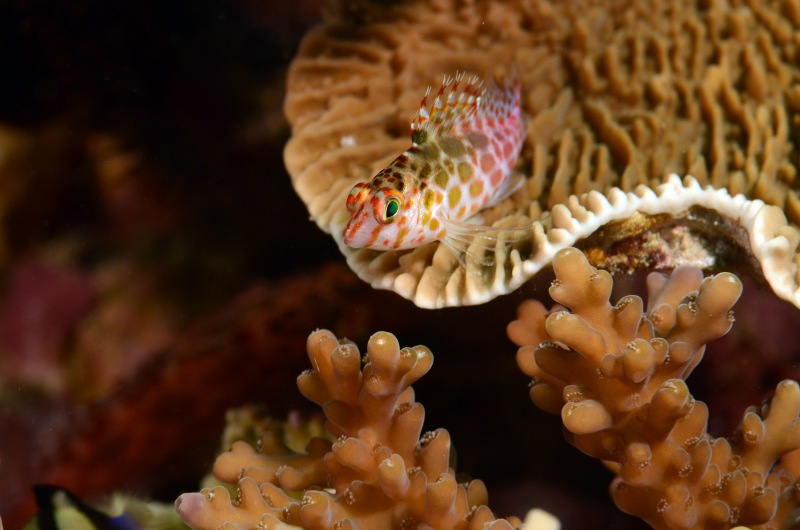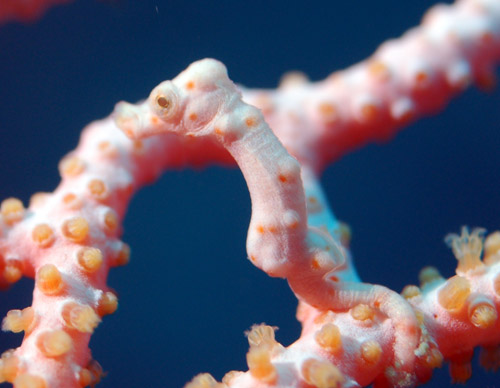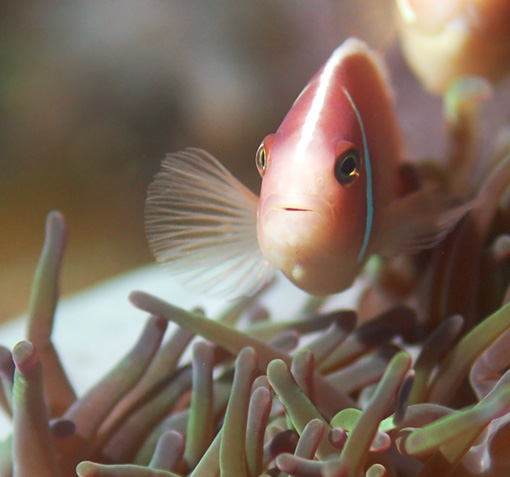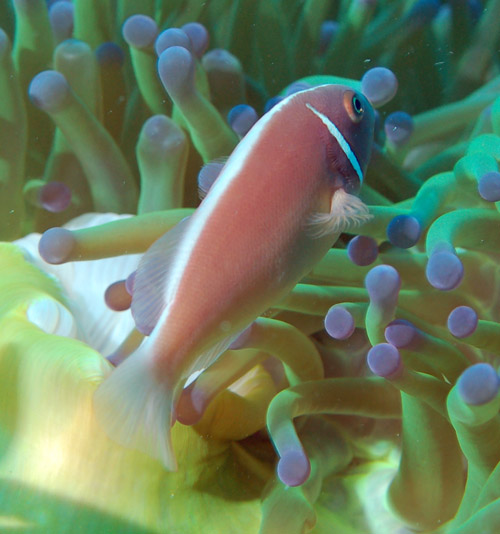
Cirrhitichthys oxycephalus, the Coral hawkfish, is a species of hawkfish found on tropical reefs of the Indo-Pacific. It occasionally is found in the aquarium trade. It grows to a length of 10 centimetres (3.9 in)
![Squarespot Anthias [Pseudanthias pleurotaenia]](https://seafishes.files.wordpress.com/2013/08/00-blurb-anthias.jpg?w=800&h=531)
Pseudanthias pleurotaenia is a Pseudanthias fish from the Pacific Ocean that is also known as the squarespot anthiasor pink square anthias. It occasionally makes its way into the aquarium trade and grows to a size of 20 cm in length. Males have bold coloration, with a pink squared spot on their side, while females are completely orange in color.

Denise’s pygmy seahorse, Hippocampus denise, is a species of fish in the Syngnathidae family. It is found in Indonesia, Malaysia, Palau, the Solomon Islands, and Vanuatu. Its natural habitat is coral reefs. The pygmy seahorse is undoubtedly one of the most well camouflaged species in the oceans, being very difficult to spot amongst the gorgonian coral it lives in. The camouflage is so effective that the species wasn’t actually discovered until its host gorgonian was being examined in a lab.
Large, bulbous tubercles cover this species’ body and match the color and shape of the polyps of its host species of gorgonian coral, while its body matches the gorgonian stem. Two color morphs exist – pale gray or purple individuals scattered with pink or red tubercles are found on the similarly colored gorgonian coral Muricella plectana, and yellow with orange tubercles are found on gorgonian coral Muricella paraplectana. It is not known whether individuals can change color if they change hosts.
The seahorses combine the unique characteristics of several different animal species such as the head of a Horse, using its tail,(grasping) like a monkey, it carries its young in a pouch like a Kangaroo, has a bony external skeleton like an insect and the independent eye movement of a Chameleon making this one of the most spectacular of any fish species. Other distinctive characteristics include a fleshy head and body, a very short snout, and a long, prehensile tail. This is also one of the smallest seahorse species in the world, typically measuring from few millimeters to 2 cm in height. The male carries eggs and young concealed within the trunk region. They are the only creature known where the male gives birth to young live ponies.
The male Seahorse courts the female by attaching his tail to a “hitching post” next to the female and vibrates his tiny Dorsal Fin rapidly to attract her attention. Eventually, she will respond to his advances by extending her “egg tube” slightly and grasping his tail twirling and spinning towards the top of the water while delivering her eggs into the males expanded open pouch. They swim in an upright position with their tails down and their heads up. Their dorsal fin moves them forward and the pectoral fin controls steering and turning. Very little is known about their life cycle. They are thought to eat the same zooplankton as the seafans that they inhabit and they seem to prefer seafans to other family members, as there are normally few other inhabitants on a pygmy’s seafan.
Seahorses are found all over the world and inhabit coral reefs and sea grass beds. They are Widespread in the Western Pacific, including in waters around Indonesia, Malaysia, Micronesia, Palau, Papua New Guinea, Philippines, Solomon Islands and Vanutu. (text source: Wikipedia)
 Pictures: Misool Islands, Raja Ampat, Papua, Indonesia by Sami Salmenkivi
Pictures: Misool Islands, Raja Ampat, Papua, Indonesia by Sami Salmenkivi


The Pink skunk clownfish or Pink anemonefish, Amphiprion perideraion, is a skunk clownfish found in the west Pacific Ocean. It is known to be one of the smaller clownfish. They can be found off the Cocos and Christmas Islands in the eastern Indian Ocean, and the Indo-Australian Archipelago. (text source: Wikipedia)
 Pictures: Misool Islands, Raja Ampat, Papua, Indonesia by Sami Salmenkivi
Pictures: Misool Islands, Raja Ampat, Papua, Indonesia by Sami Salmenkivi